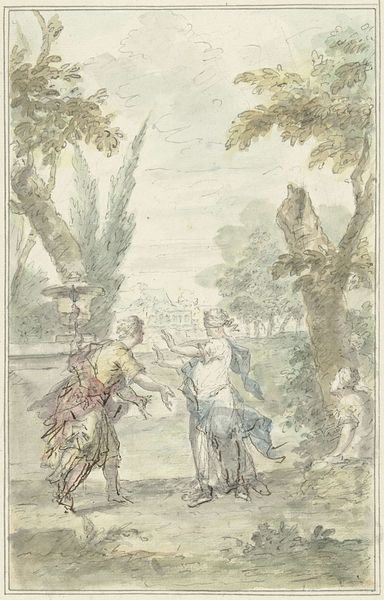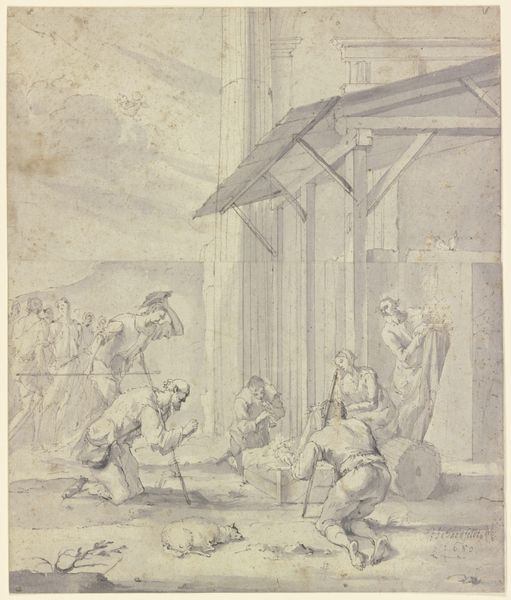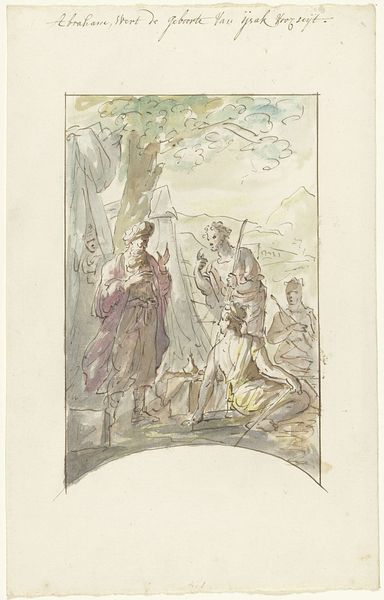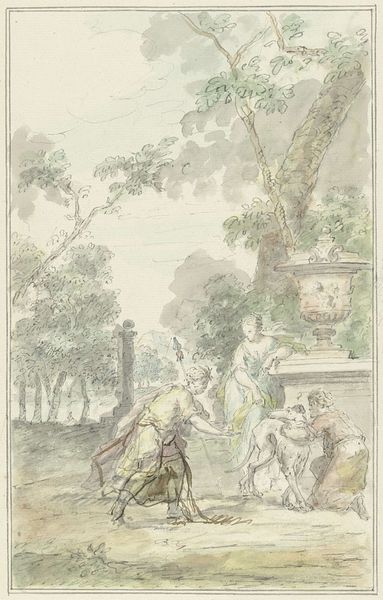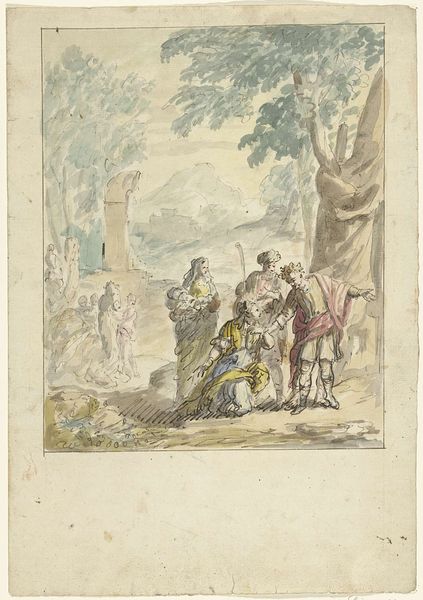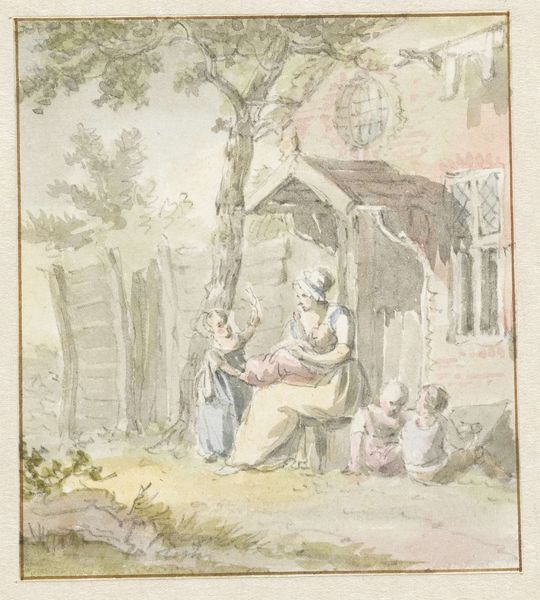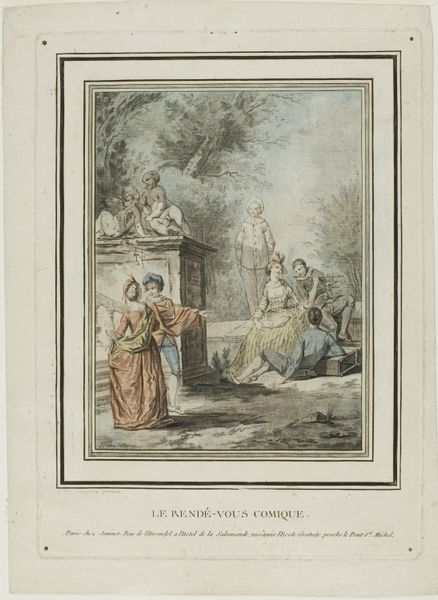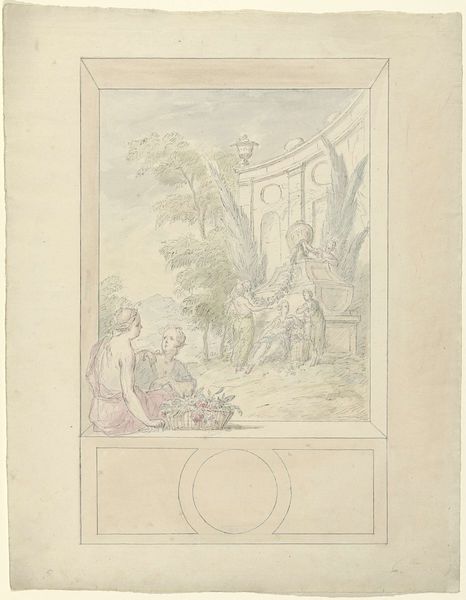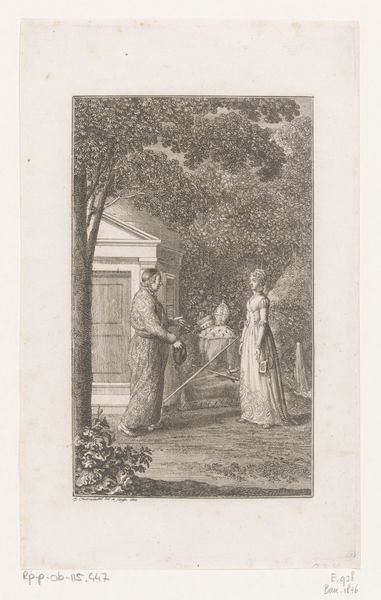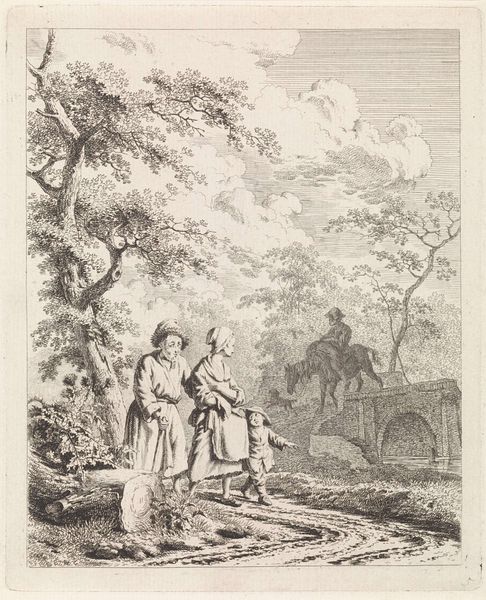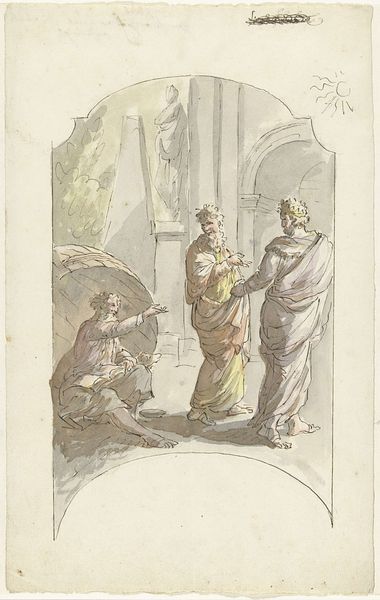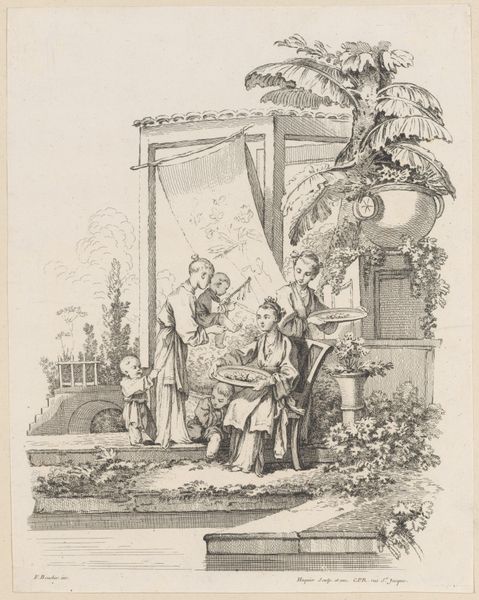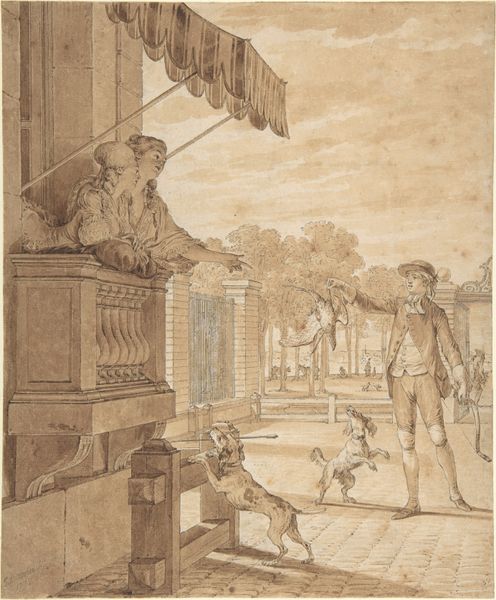
drawing, watercolor
#
drawing
#
narrative-art
#
baroque
#
figuration
#
watercolor
#
coloured pencil
#
genre-painting
#
watercolor
Dimensions: height 291 mm, width 202 mm
Copyright: Rijks Museum: Open Domain
Editor: We're looking at "Dienstmaagd bij jongen die kind uit kruiwagen laat tuimelen," a watercolor drawing by Elias van Nijmegen, created sometime between 1677 and 1755. The composition is quite comical, a domestic scene of apparent chaos in an elaborate garden. I am particularly struck by the contrast between the elegance of the setting and the silliness of the figures’ actions. How do you interpret this work within its historical context? Curator: That contrast is precisely what makes this drawing so compelling. Given the period, it offers a fascinating glimpse into the social dynamics of the time. Notice the architectural structure framing the scene; it evokes a sense of elite space. Yet, within it, we have what appears to be a domestic servant, a young boy, and a child in disarray. Does the positioning of figures relative to the garden structures speak to established class structure? Editor: That's a keen observation! The architectural elements really do frame them in a way that subtly implies their roles, almost like a stage. It’s hard to miss the dynamic—someone in service seemingly caught between gentle disapproval and silent amusement at this childish mayhem, taking place within a confined yet ornamental enclosure. Is there perhaps some social commentary implied, maybe touching on wealth or domesticity? Curator: I think so. Consider the role of genre painting in this era. It often served to both depict and subtly critique social mores. Is Van Nijmegen perhaps inviting the viewer, likely a member of the privileged class, to reflect on the dynamics of their own household? Is there a silent laugh shared when those of wealth are exposed for absurd family life? How might this watercolor have functioned as a conversation piece in a wealthy household of the time? Editor: That framing definitely offers a richer lens. It's made me consider how this seemingly simple scene encapsulates broader socio-political ideas. Curator: Precisely. Art's value extends far beyond its aesthetic qualities; it also serves as a mirror reflecting, and refracting, society itself. It’s through analyzing art’s relationship with cultural, social, and institutional histories that true dialogue with any period starts.
Comments
No comments
Be the first to comment and join the conversation on the ultimate creative platform.
